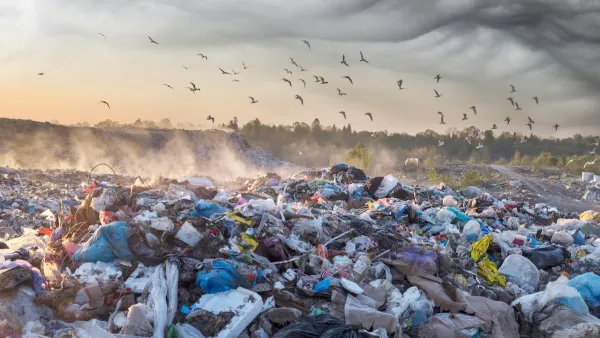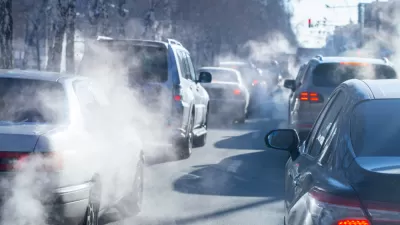The infrastructure required to support 5G is going to be massive, and while improvements in throughput sound great, one of the best kept – and dirtiest – secrets about 5G is the energy consumption required to support the network.

The Trump administration unveiled a major push Friday to accelerate the rollout of 5G infrastructure. Under the new plan, the Federal Communications Commission will release the largest trove of U.S. wireless spectrum ever to be auctioned off. The FCC also proposed a $20 billion fund to expand broadband in rural America, connecting up to 4 million households and small businesses to high-speed internet.
The table is set; the meal, as in the buildout, comes next. But the reality is we may not want to sit down for this dinner, because one of the best kept – and dirtiest – secrets about 5G is the energy consumption required to support the network.
“A lurking threat behind the promise of 5G delivering up to 1,000 times as much data as today’s networks is that 5G could also consume up to 1,000 times as much energy,” Dexter Johnson recently wrote for the IEEE Spectrum.
The infrastructure required to support 5G is going to be massive – beyond what most people can comprehend, including industry specialists.
Unlike the current 4G networks which rely on signals that transmit for miles by large cell towers, 5G will need small cell sites every few hundred feet to broadcast its short-range signals.
For some perspective, your typical wireless provider – like AT&T, Verizon, and Sprint – have about 70,000 macro cell towers spread across the US. That’s a huge number, but in return, you get near nationwide coverage.
For a fully built-out 5G network in Dallas, for example, the city will need a whopping 10,000 small cell sites. That’s right, 10,000 antennas in just one city; keep in mind there are over 19,000 cities in the US.
Gulp.
But it turns out predicting the amount of energy required to power a 5G network is a hard thing to do.
As you deploy more small cells on top of the existing cellular infrastructure, the total energy consumption of the network will grow. Even though energy consumption of a small cell is lower than a conventional macro cell – which will eventually be phased out – you need many more small cells to provide full coverage.
Exactly how many? It’s still not clear, so making net 5G energy consumption predictions remains a challenge at this point.
That said, there aren’t a lot of reasons to be optimistic, according to Vetiv and technology analyst firm 451 Research, who recently surveyed over 100 global telecom operators. More than 90 percent of respondents believe 5G will result in higher energy costs.
This result was also consistent with Vertiv’s internal analysis, which found that 5G could increase total network energy consumption by 150-170 percent by 2026.
It’s not all doom and gloom, however. Some experts, like Emil Björnso, associate professor at Linkoping University, believe that power consumption should come down on 5G infrastructure over time.
“Just as computer processors become vastly more efficient over time, the analog and digital circuits that are used in base stations will become more efficient,” he recently told the IEEE Spectrum. “The first generation of 5G hardware will be all about delivering all the new features to the market, but then there will be time to refine the hardware,” he continued.
Bottom line, it’s hard to know who to believe at this point, but let’s be real: this wouldn’t be the first time engineers built a solution to solve one set of problems, only to cause another set of problems.
Mining bitcoin today, for example, consumes more electricity than is generated by all of the world’s solar panels combined. In other words, as David Wallace-Wells wrote in The Uninhabitable Earth, “In just a few years we’ve assembled, out of distrust of one another and the nations behind the ‘fiat currencies’, a program to wipe out the gains of several long, hard generations of green energy innovations.”
So yes, the 5G table is set, and improvements in speed, coverage, and reliability sound great, in principle.
But if these advances lead to higher energy consumption at precisely the moment in time when the world needs to cut and clean its energy consumption, then maybe this meal isn’t worth sitting for.
Rob Fischer is President of GTiMA, a tech and policy advisor to Mandli Communications’ strategy team, and an Associate Editor of the SAE International Journal of Connected and Automated Vehicles. GTiMA and Mandli Communications are both proud partners of the Wisconsin Autonomous Vehicle Proving Ground. Follow Rob on Twitter (@Robfischeris) and Linkedin.
FULL STORY: The Best Kept – and Dirtiest – Secret About 5G

Planetizen Federal Action Tracker
A weekly monitor of how Trump’s orders and actions are impacting planners and planning in America.

Restaurant Patios Were a Pandemic Win — Why Were They so Hard to Keep?
Social distancing requirements and changes in travel patterns prompted cities to pilot new uses for street and sidewalk space. Then it got complicated.

Maui's Vacation Rental Debate Turns Ugly
Verbal attacks, misinformation campaigns and fistfights plague a high-stakes debate to convert thousands of vacation rentals into long-term housing.

In California Battle of Housing vs. Environment, Housing Just Won
A new state law significantly limits the power of CEQA, an environmental review law that served as a powerful tool for blocking new development.

Boulder Eliminates Parking Minimums Citywide
Officials estimate the cost of building a single underground parking space at up to $100,000.

Orange County, Florida Adopts Largest US “Sprawl Repair” Code
The ‘Orange Code’ seeks to rectify decades of sprawl-inducing, car-oriented development.
Urban Design for Planners 1: Software Tools
This six-course series explores essential urban design concepts using open source software and equips planners with the tools they need to participate fully in the urban design process.
Planning for Universal Design
Learn the tools for implementing Universal Design in planning regulations.
Heyer Gruel & Associates PA
JM Goldson LLC
Custer County Colorado
City of Camden Redevelopment Agency
City of Astoria
Transportation Research & Education Center (TREC) at Portland State University
Camden Redevelopment Agency
City of Claremont
Municipality of Princeton (NJ)





























